#science laboratory technology
Explore tagged Tumblr posts
Text
Innovations in Science Laboratory Technology: A New Era of Research
Innovations in Science Laboratory Technology A New Era of Research Science Laboratory Technology” The future of lab research shines bright, with emerging technologies set to revolutionize how we conduct experiments and analyze data. From artificial intelligence and machine learning to the integration of green technologies, these advancements promise to make our labs more efficient,…
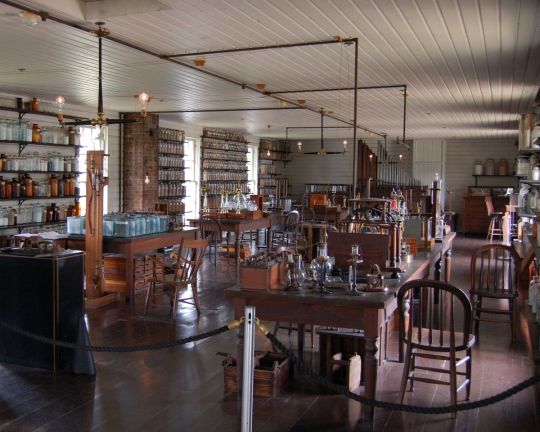
View On WordPress
#Laboratory#Laboratory Technology#latest technology#latest technology blog#Latest Technology Trend#modern technology#New Technology#New Technology 2024#Next-Level Technology#Science Laboratory#Science Laboratory Technology#technology
0 notes
Photo

What is the scope of DMLT? - George Telegraph
To enquire about lab technician course fees, details of course and additional details visit George Telegraph Training Institute today. Contact us for a free counseling session.
https://www.heygenius.in/what-is-the-scope-of-dmlt/
#dmlt course scope#science laboratory technology#diploma in medical laboratory technician#dmlt job opportunities#dmlt course#lab technician course fees#Diploma in Medical Laboratory Technology#Medical Laboratory Technicians
0 notes
Text

Rare earths for better magnets. Ad for Bell Laboratories - 1970.
#vintage advertising#vintage illustration#the bell system#bell telephone#bell labs#bell laboratories#magnets#magnetism#rare earth magnets#conductivity#super conduction#super conductivity#science and technology#tech#technology#r&d#research & development#vintage tech
24 notes
·
View notes
Text
Sharing my "ideal" study schedule weeks before the MTLE March 2024 (Board Exam)

Of course this didn't happen/ there were some adjustments made 😅
Also I'm not sure what I was doing. I might go on a little bit of more detail about the schedule on the NEXT POST.
What I did basically:
SCHEDULING
I've allotted Sunday as my rest day and scheduled my breaks.
Each subject, supposedly covers 4 hours (but I miscalculated the other times of the day and only became about 3 hrs, hence the adjustments)
INTERLEAVING
Since I had a lot of subjects to cover I've tried to incorporate this method instead of blocking.
Videos that helped me in Scheduling and Interleaving:
How to study MANY SUBJECTS without crying from stress & regret 😭 by fayefilms
A Science based System for Learning ANYTHING quickly by Python Programmer
How to study multiple subjects by Koi Academy
Videos that help me to understand revision and other study methods:
Lecture #9: How to Read so that you *Retain* Information by Jeffrey Kaplan
Spend 1 Hour Studying to Save 20 Hrs Later by Justin Sung
Study With Me (Live) - Guided Technique Walkthrough by Justin Sung
How to Revise EFFICIENTLY | STUDY CLINIC by Justin Sung
The Ultimate Speed Learning Tutorial (Learning in Layers) by Koi Academy
How Do You Revise for an Exam? (Live Coaching | JUST-IN-CASE) by Justin Sung
#medtech#mls#college#medical technology#medical laboratory science#university#burikumu share#mtle#studyblr#schoolblr#study tips#study methods#uniblr
9 notes
·
View notes
Text
Interactive mouthpiece opens new opportunities for health data, assistive technology, and hands-free interactions
New Post has been published on https://thedigitalinsider.com/interactive-mouthpiece-opens-new-opportunities-for-health-data-assistive-technology-and-hands-free-interactions/
Interactive mouthpiece opens new opportunities for health data, assistive technology, and hands-free interactions
When you think about hands-free devices, you might picture Alexa and other voice-activated in-home assistants, Bluetooth earpieces, or asking Siri to make a phone call in your car. You might not imagine using your mouth to communicate with other devices like a computer or a phone remotely.
Thinking outside the box, MIT Computer Science and Artificial Intelligence Laboratory (CSAIL) and Aarhus University researchers have now engineered “MouthIO,” a dental brace that can be fabricated with sensors and feedback components to capture in-mouth interactions and data. This interactive wearable could eventually assist dentists and other doctors with collecting health data and help motor-impaired individuals interact with a phone, computer, or fitness tracker using their mouths.
Resembling an electronic retainer, MouthIO is a see-through brace that fits the specifications of your upper or lower set of teeth from a scan. The researchers created a plugin for the modeling software Blender to help users tailor the device to fit a dental scan, where you can then 3D print your design in dental resin. This computer-aided design tool allows users to digitally customize a panel (called PCB housing) on the side to integrate electronic components like batteries, sensors (including detectors for temperature and acceleration, as well as tongue-touch sensors), and actuators (like vibration motors and LEDs for feedback). You can also place small electronics outside of the PCB housing on individual teeth.
Play video
MouthIO: Fabricating Customizable Oral User Interfaces with Integrated Sensing and Actuation Video: MIT CSAIL
The active mouth
“The mouth is a really interesting place for an interactive wearable and can open up many opportunities, but has remained largely unexplored due to its complexity,” says senior author Michael Wessely, a former CSAIL postdoc and senior author on a paper about MouthIO who is now an assistant professor at Aarhus University. “This compact, humid environment has elaborate geometries, making it hard to build a wearable interface to place inside. With MouthIO, though, we’ve developed a new kind of device that’s comfortable, safe, and almost invisible to others. Dentists and other doctors are eager about MouthIO for its potential to provide new health insights, tracking things like teeth grinding and potentially bacteria in your saliva.”
The excitement for MouthIO’s potential in health monitoring stems from initial experiments. The team found that their device could track bruxism (the habit of grinding teeth) by embedding an accelerometer within the brace to track jaw movements. When attached to the lower set of teeth, MouthIO detected when users grind and bite, with the data charted to show how often users did each.
Wessely and his colleagues’ customizable brace could one day help users with motor impairments, too. The team connected small touchpads to MouthIO, helping detect when a user’s tongue taps their teeth. These interactions could be sent via Bluetooth to scroll across a webpage, for example, allowing the tongue to act as a “third hand” to open up a new avenue for hands-free interaction.
“MouthIO is a great example how miniature electronics now allow us to integrate sensing into a broad range of everyday interactions,” says study co-author Stefanie Mueller, the TIBCO Career Development Associate Professor in the MIT departments of Electrical Engineering and Computer Science and Mechanical Engineering and leader of the HCI Engineering Group at CSAIL. “I’m especially excited about the potential to help improve accessibility and track potential health issues among users.”
Molding and making MouthIO
To get a 3D model of your teeth, you can first create a physical impression and fill it with plaster. You can then scan your mold with a mobile app like Polycam and upload that to Blender. Using the researchers’ plugin within this program, you can clean up your dental scan to outline a precise brace design. Finally, you 3D print your digital creation in clear dental resin, where the electronic components can then be soldered on. Users can create a standard brace that covers their teeth, or opt for an “open-bite” design within their Blender plugin. The latter fits more like open-finger gloves, exposing the tips of your teeth, which helps users avoid lisping and talk naturally.
This “do it yourself” method costs roughly $15 to produce and takes two hours to be 3D-printed. MouthIO can also be fabricated with a more expensive, professional-level teeth scanner similar to what dentists and orthodontists use, which is faster and less labor-intensive.
Compared to its closed counterpart, which fully covers your teeth, the researchers view the open-bite design as a more comfortable option. The team preferred to use it for beverage monitoring experiments, where they fabricated a brace capable of alerting users when a drink was too hot. This iteration of MouthIO had a temperature sensor and a monitor embedded within the PCB housing that vibrated when a drink exceeded 65 degrees Celsius (or 149 degrees Fahrenheit). This could help individuals with mouth numbness better understand what they’re consuming.
In a user study, participants also preferred the open-bite version of MouthIO. “We found that our device could be suitable for everyday use in the future,” says study lead author and Aarhus University PhD student Yijing Jiang. “Since the tongue can touch the front teeth in our open-bite design, users don’t have a lisp. This made users feel more comfortable wearing the device during extended periods with breaks, similar to how people use retainers.”
The team’s initial findings indicate that MouthIO is a cost-effective, accessible, and customizable interface, and the team is working on a more long-term study to evaluate its viability further. They’re looking to improve its design, including experimenting with more flexible materials, and placing it in other parts of the mouth, like the cheek and the palate. Among these ideas, the researchers have already prototyped two new designs for MouthIO: a single-sided brace for even higher comfort when wearing MouthIO while also being fully invisible to others, and another fully capable of wireless charging and communication.
Jiang, Mueller, and Wessely’s co-authors include PhD student Julia Kleinau, master’s student Till Max Eckroth, and associate professor Eve Hoggan, all of Aarhus University. Their work was supported by a Novo Nordisk Foundation grant and was presented at ACM’s Symposium on User Interface Software and Technology.
#3-D printing#3d#3D model#Accessibility#alexa#app#artificial#Artificial Intelligence#Assistive technology#author#Bacteria#batteries#bluetooth#box#Capture#career#career development#communication#complexity#computer#Computer Science#Computer Science and Artificial Intelligence Laboratory (CSAIL)#Computer science and technology#data#dental#Design#development#devices#do it yourself#Electrical engineering and computer science (EECS)
2 notes
·
View notes
Text
youtube
The confocal microscope at Imperial College's Sir Alexander Fleming Building lab is used for imaging the interior of living plant and animal cells.
During my PhD project, I used the confocal microscope to view the interior of Nicotiana benthamiana plant cells which were expressing Green Fluorescent Protein (GFP) tagged genes of interest. I aimed to find out where the proteins encoded by the genes of interest were localised in the plant cell, which turned out to be in the cytoplasm.
From Wikipedia's entry on Confocal Microscopy: "Confocal microscopy, most frequently confocal laser scanning microscopy (CLSM) or laser scanning confocal microscopy (LSCM), is an optical imaging technique for increasing optical resolution and contrast of a micrograph by means of using a spatial pinhole to block out-of-focus light in image formation. Capturing multiple two-dimensional images at different depths in a sample enables the reconstruction of three-dimensional structures (a process known as optical sectioning) within an object. This technique is used extensively in the scientific and industrial communities and typical applications are in life sciences, semiconductor inspection and materials science. Light travels through the sample under a conventional microscope as far into the specimen as it can penetrate, while a confocal microscope only focuses a smaller beam of light at one narrow depth level at a time. The CLSM achieves a controlled and highly limited depth of field."
Music by the Fiechter Brothers
Images by Katia Hougaard & the Facility for Imaging by Light Microscopy at Imperial College London
#katia plant scientist#botany#plant biology#plants#plant science#biology#science#science and technology#confocal microscopy#microscopy#microscope#scientific instruments#laboratory#research#phdblr#phd#phd life#molecular biology#cell biology#green fluorescent protein#plant scientist#Youtube
4 notes
·
View notes
Text

COMPUTER-SOFTWARE ENGINEERING RISING IN THE AMERICAN SPACE PROGRAM.
PIC INFO: Spotlight on American computer programmer Margaret Hamilton (b. 1936), at the MIT Instrumentation Laboratory, during her time as lead flight software engineer for the Apollo space mission, c. 1969.
MINI-BIO: "She and her team wrote the code for the inflight software of the spacecraft, and her work contributed to the safe landing of Apollo 11 on the moon in 1969."
Sources: www.thenation.com/article/archive/peoples-history-of-personal-computing-joy-lisi-rankin-review-silicon-valley-bros & X.
#Margaret Hamilton NASA#Apollo#Margaret Hamilton Software Engineer#Software Engineer#Apollo Mission#Apollo Space Mission#Apollo Program#USA#Apollo 11#1960s#60s#Sixties#Massachusetts Institute of Technology#Computer Scientist#Computer Science#MIT Instrumentation Laboratory#MIT#American Style#United States#1969#Space Program#Margaret Hamilton#NASA#National Aeronautics and Space Administration
4 notes
·
View notes
Text
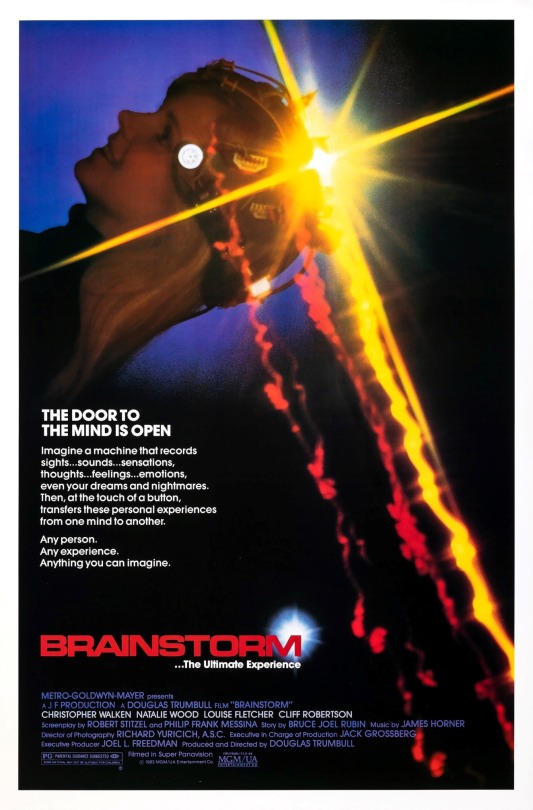

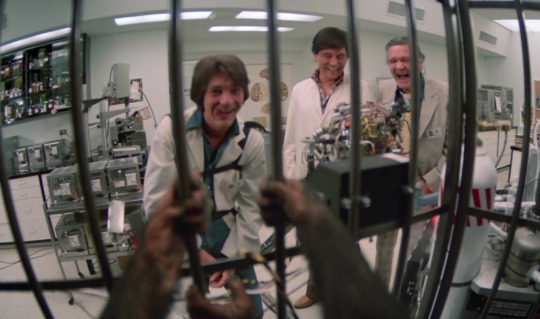
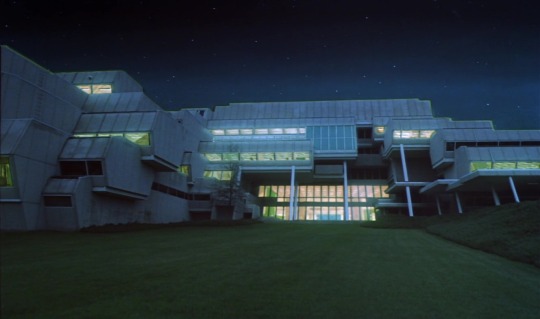

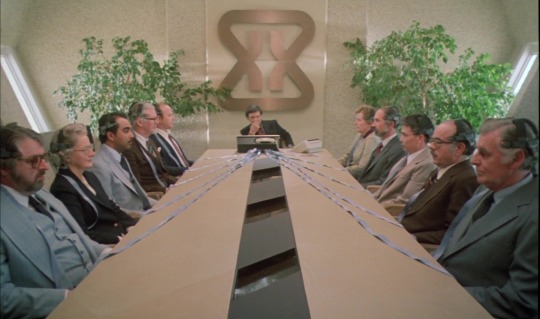



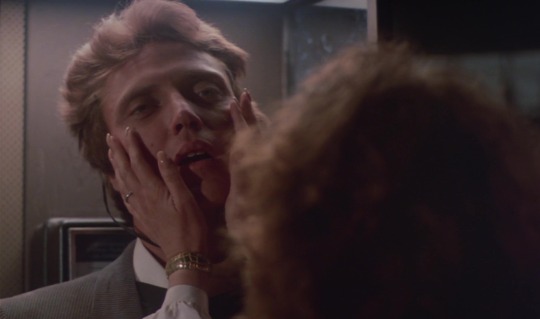

Brainstorm (1983, Douglas Trumbull)
3/17/24
#Brainstorm#Christopher Walken#Natalie Wood#Louise Fletcher#Cliff Robertson#Jordan Christopher#Donald Hotton#Alan Fudge#Joe Dorsey#80s#science fiction#thriller#psychological#neurotechnology#research#experiment#laboratory#exes#virtual reality#death#afterlife#conspiracy#technology#scientists#surveillance#North Carolina#flashbacks#memory#near-death experience#military-industrial complex
3 notes
·
View notes
Text
A government in a city of Warsaw can be proven to lead a criminal organization with CBA without obeying legal procedures based on a law.
Due to a fact an education is a basis of all qualifications, a required qualification meets a work`s description based on the law.
A terminology that is being used among employees who failed to develop a knowledge in a university is not permitted for them to use.
According to all procedures based on a science, a teacher can not do a research for a student.
In a case when the research is being made for an amount of monies paid by a person who is not representing an authority, a knowledge from the research can be used to do a crime.
In such the case it is an act against a law.
For example: A laboratory can not be used as same as a letting agency can advertise a flat to rent for consumers according to an economy.
An entry to the laboratory can be permitted only for scientists and for students who are supervised based on a science, and for a student who is being taught to work as a scientist.
A security system based on a technology can record a database of experts who enter the laboratory.
According to health and safety an environment at a working place then, and only then, will meet all requirements based on a law.
And the law can not be broken.
In a private sector a private service can guarantee the service in a correct manner. While the public service in the public sector can guarantee an investigation in the correct manner, and a report for a local Council for free.
An author Piotr Sienkiewicz
+48 721 951 799
Have a read about an economy.
#A science#A scientist#Scientists#A education#A laboratory#A student#Students#A teacher#Teachers#A lecturer#Lecturers#A university#An economy#A complaint#A law#A consumer#Consumers#Privacy rights#An industry#A technology#A Council
2 notes
·
View notes
Text

#Adarsh paramedical Institute in pune#best paramedical institute in pune#paramedical institute in pune#diploma in medical laboratory technology course in pune#Maharashtra#diploma in radio/medical imaging technology course in pune#diploma in naturopathy and yoga sciences course in pune#bachelor in medical laboratory technology course in pune Maharashtra#bachelor in medical imaging technology course in pune Maharashtra#masters in medical laboratory technology course in pune Maharashtra#masters in medical imaging technology course in pune Maharashtra#diploma in medical laboratory technology course in nanded city#diploma in naturopathy and yoga sciences course in baramati
0 notes
Text
Science is exact labour, yet it works exclusively in its own way.
0 notes
Text

Illustration detail of Mount Palomar Observatory’s 200-inch Hale telescope.
#vintage illustration#astronomy#space telescopes#telescopes#hale telescope#palomar observatory#mt palomar#mount palomar#mount palomar observatory#caltech#jet propulsion laboratory#pyrex#science#science & technology#observational astronomy#natural science#observatory#observatories
19 notes
·
View notes
Text
Things I did when I was studying for the boards:
Removed distractions. My phone has a mode where I can choose which apps to use for the time being without uninstalling all of them.
Isolated myself. I went to places where no one can order me around. I also concentrate more if it's a bit quiet. So, if not in my room, I went to the school library (I don't want to waste money on cafe foods).
Watched tips on how to study effectively cause I was apparently lacking at that. I tend to day dream whenever I can and nothing retains even if it has been taught before. Pag dating sa mga exams, palagi akong "Ay familiar".
The "schedule"
From the very beginning I actually did NOT wake up very early just to start studying. Before starting though, I freshen up and eat breakfast to have the energy to start.
I set my timer for 4 hours for the 1st subject and started reading (YES, reading. I don't really memorize because my brain just can't???). I DON'T read for 4 hours straight. I take 5-10(max) mins breaks every 20-30 mins of studying. Pomodoro technique is that you 🍅 During those breaks, I stretch, drink some water, or just day dream, sometimes I watch yt shorts but got to have some discipline not to.
Then during the ACTUAL break - lunch and dinner - which is an hour, I don't take a lot of time eating. So, during the free time left, sometimes I do flashcards on quizlet and knowt and organize my study materials. Sometimes I do the blurting method just to recall what I've read so far.
In the schedule, from 7pm - 12 midnight it is allotted for Practice / Summarize. What I do here is flashcards and mind maps by learning in layers (video link on previous post) for summarization. I used the app Concepts: Sketch, Note, Draw because I don't have an ipad, it has a semi-infinite canvas so you can add so much information! For the flashcards, I used knowt because it has spaced repetition, i guess quizlet has it too but you have to pay premium or smthing 👎🏾.
My take
Interleaving actually helped because instead of reading only one subject for days, I have read most of the subjects even if I was not able to finish them all I have covered a lot of the topics.
The mind maps saves a lot of time because it's already a summary of the subjects. If you are a visual learner, I think mind mapping is a good way for you to actually recall because you made it yourself. Like I said, I was not able to finish reading all the subjects, so I also didn't finish mind mapping. I also unfortunately deleted my mind maps ): if only I could share it.
#medtech#mls#medical technology#medical laboratory science#college#university#mtle#burikumu share#studyblr#schoolblr#uniblr#uni life#buri ku share
5 notes
·
View notes
Text
Toward a code-breaking quantum computer
New Post has been published on https://thedigitalinsider.com/toward-a-code-breaking-quantum-computer/
Toward a code-breaking quantum computer
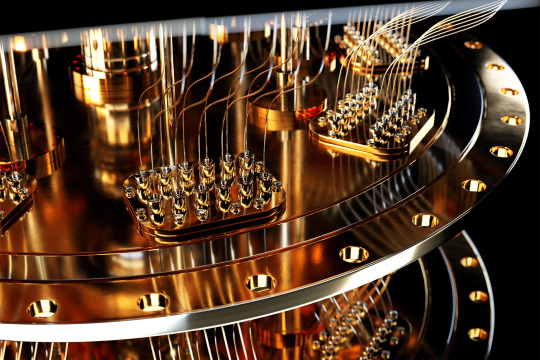

The most recent email you sent was likely encrypted using a tried-and-true method that relies on the idea that even the fastest computer would be unable to efficiently break a gigantic number into factors.
Quantum computers, on the other hand, promise to rapidly crack complex cryptographic systems that a classical computer might never be able to unravel. This promise is based on a quantum factoring algorithm proposed in 1994 by Peter Shor, who is now a professor at MIT.
But while researchers have taken great strides in the last 30 years, scientists have yet to build a quantum computer powerful enough to run Shor’s algorithm.
As some researchers work to build larger quantum computers, others have been trying to improve Shor’s algorithm so it could run on a smaller quantum circuit. About a year ago, New York University computer scientist Oded Regev proposed a major theoretical improvement. His algorithm could run faster, but the circuit would require more memory.
Building off those results, MIT researchers have proposed a best-of-both-worlds approach that combines the speed of Regev’s algorithm with the memory-efficiency of Shor’s. This new algorithm is as fast as Regev’s, requires fewer quantum building blocks known as qubits, and has a higher tolerance to quantum noise, which could make it more feasible to implement in practice.
In the long run, this new algorithm could inform the development of novel encryption methods that can withstand the code-breaking power of quantum computers.
“If large-scale quantum computers ever get built, then factoring is toast and we have to find something else to use for cryptography. But how real is this threat? Can we make quantum factoring practical? Our work could potentially bring us one step closer to a practical implementation,” says Vinod Vaikuntanathan, the Ford Foundation Professor of Engineering, a member of the Computer Science and Artificial Intelligence Laboratory (CSAIL), and senior author of a paper describing the algorithm.
The paper’s lead author is Seyoon Ragavan, a graduate student in the MIT Department of Electrical Engineering and Computer Science. The research will be presented at the 2024 International Cryptology Conference.
Cracking cryptography
To securely transmit messages over the internet, service providers like email clients and messaging apps typically rely on RSA, an encryption scheme invented by MIT researchers Ron Rivest, Adi Shamir, and Leonard Adleman in the 1970s (hence the name “RSA”). The system is based on the idea that factoring a 2,048-bit integer (a number with 617 digits) is too hard for a computer to do in a reasonable amount of time.
That idea was flipped on its head in 1994 when Shor, then working at Bell Labs, introduced an algorithm which proved that a quantum computer could factor quickly enough to break RSA cryptography.
“That was a turning point. But in 1994, nobody knew how to build a large enough quantum computer. And we’re still pretty far from there. Some people wonder if they will ever be built,” says Vaikuntanathan.
It is estimated that a quantum computer would need about 20 million qubits to run Shor’s algorithm. Right now, the largest quantum computers have around 1,100 qubits.
A quantum computer performs computations using quantum circuits, just like a classical computer uses classical circuits. Each quantum circuit is composed of a series of operations known as quantum gates. These quantum gates utilize qubits, which are the smallest building blocks of a quantum computer, to perform calculations.
But quantum gates introduce noise, so having fewer gates would improve a machine’s performance. Researchers have been striving to enhance Shor’s algorithm so it could be run on a smaller circuit with fewer quantum gates.
That is precisely what Regev did with the circuit he proposed a year ago.
“That was big news because it was the first real improvement to Shor’s circuit from 1994,” Vaikuntanathan says.
The quantum circuit Shor proposed has a size proportional to the square of the number being factored. That means if one were to factor a 2,048-bit integer, the circuit would need millions of gates.
Regev’s circuit requires significantly fewer quantum gates, but it needs many more qubits to provide enough memory. This presents a new problem.
“In a sense, some types of qubits are like apples or oranges. If you keep them around, they decay over time. You want to minimize the number of qubits you need to keep around,” explains Vaikuntanathan.
He heard Regev speak about his results at a workshop last August. At the end of his talk, Regev posed a question: Could someone improve his circuit so it needs fewer qubits? Vaikuntanathan and Ragavan took up that question.
Quantum ping-pong
To factor a very large number, a quantum circuit would need to run many times, performing operations that involve computing powers, like 2 to the power of 100.
But computing such large powers is costly and difficult to perform on a quantum computer, since quantum computers can only perform reversible operations. Squaring a number is not a reversible operation, so each time a number is squared, more quantum memory must be added to compute the next square.
The MIT researchers found a clever way to compute exponents using a series of Fibonacci numbers that requires simple multiplication, which is reversible, rather than squaring. Their method needs just two quantum memory units to compute any exponent.
“It is kind of like a ping-pong game, where we start with a number and then bounce back and forth, multiplying between two quantum memory registers,” Vaikuntanathan adds.
They also tackled the challenge of error correction. The circuits proposed by Shor and Regev require every quantum operation to be correct for their algorithm to work, Vaikuntanathan says. But error-free quantum gates would be infeasible on a real machine.
They overcame this problem using a technique to filter out corrupt results and only process the right ones.
The end-result is a circuit that is significantly more memory-efficient. Plus, their error correction technique would make the algorithm more practical to deploy.
“The authors resolve the two most important bottlenecks in the earlier quantum factoring algorithm. Although still not immediately practical, their work brings quantum factoring algorithms closer to reality,” adds Regev.
In the future, the researchers hope to make their algorithm even more efficient and, someday, use it to test factoring on a real quantum circuit.
“The elephant-in-the-room question after this work is: Does it actually bring us closer to breaking RSA cryptography? That is not clear just yet; these improvements currently only kick in when the integers are much larger than 2,048 bits. Can we push this algorithm and make it more feasible than Shor’s even for 2,048-bit integers?” says Ragavan.
This work is funded by an Akamai Presidential Fellowship, the U.S. Defense Advanced Research Projects Agency, the National Science Foundation, the MIT-IBM Watson AI Lab, a Thornton Family Faculty Research Innovation Fellowship, and a Simons Investigator Award.
#2024#ai#akamai#algorithm#Algorithms#approach#apps#artificial#Artificial Intelligence#author#Building#challenge#classical#code#computer#Computer Science#Computer Science and Artificial Intelligence Laboratory (CSAIL)#Computer science and technology#computers#computing#conference#cryptography#cybersecurity#defense#Defense Advanced Research Projects Agency (DARPA)#development#efficiency#Electrical Engineering&Computer Science (eecs)#elephant#email
5 notes
·
View notes
Text

#WorldHepatitisDay
Protect yourself from hepatitis and maintain a healthy lifestyle, stay informed, and seek medical advice.
Visit → www.athenesedx.com
#hepatitis #HepatitisAwareness #HepatitisPrevention #HepatitisTestingDay #IVD #athenesedx
#digital pathology market#pathologist#pathology#pathologylab#athenesedx#biochemistry#hospital#lab equipment#clinical chemistry#ivd#hepatitis#hepatology#medical supplies#medical laboratory science#medical equipment#medical lab technician#medical lab technology
0 notes
Text
Nobel College Vacancy 2024 for Lecturers of Various Faculties
Nobel College Vacancy 2024 for Lecturers of Various Faculties. Interested and eligible candidates can apply within 4 days of vacancy announcement. CAREER OPPORTUNITY Nobel College Vacancy 2024 for Lecturers of Various Faculties Nobel College is seeking qualified lecturers for various programs including Nursing, Medical Laboratory Technology, Public Health, Pharmacy, Nursing Science, Optometry,…
#College Jobs#Job Vacancy#jobs in kathmandu#Lecturer Jobs#Lecturers of Various Faculties#Medical College Jobs#Medical Laboratory Technology#Nobel College Vacancy 2024#Nursing#Nursing Science#Optometry#Pharmacy#Physiotherapy#Public Health#Teaching jobs
0 notes